Meet Branden Rakita
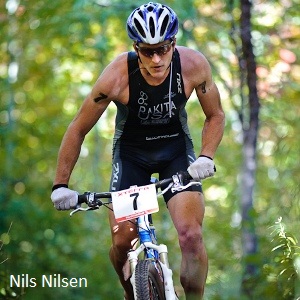
Branden Rakita is a Colorado-based professional XTERRA racer who also dabbles in road triathlon. We take a look behind the scenes to see what makes him tick – and race so fast.
Slowtwitch: Thanks for granting us the interview.
Branden Rakita: My pleasure.
ST: We understand you travel quite a lot for training and races. Where do you call home?
Branden: I live in Colorado Springs for my primary home base. I love getting out to other place to train though; I spent a few months in Tucson this winter for a change and was impressed with the variety. I’ll also occasionally head to Boulder and get some great road riding, or head into the mountains for new trails.
ST: Tell us about your athletic background.
Branden: I grew up doing a ton of different sports, but never enjoyed the more mass market American sports like basketball and baseball. I always leaned more toward the endurance sports like swimming, biking, running, and Nordic skiing. Soccer was also a big passion of mine growing up.
I would typically go to swim practice in the morning, and then ride 10 miles home afterwards. It was a natural progression to do the Ironkids Triathlons in the late 80’s, early 90’s. After I was too old for those races, I played soccer with a traveling team for four years. Going into high school I made the tough decision to go for the cross country team instead of soccer, and that set a path from there.
ST: What is it about XTERRA that appeals to you?
Branden: There are two traits to XTERRA that appeal to me. One is the laid back atmosphere of the races; it is much more casual and relaxed than the road scene. It’s like one big family. There’s a lot of camaraderie between the guys and we can’t wait for the next race. It is more like a fun group ride leading up to the race.
The second is the variation between the courses. Each course can suit certain individuals and hurt others but there is always another course out there were the roles reverse. The trails vary at each course and the skill set required to ride fast is very different. It is challenging to ride trails that are different than what you train on. On the road the only things that really change are how many potholes are in the road and how much elevation change there is. When you add tight trees, 45 minute climbs, loose rock, sand, and roots to the equation, there is a lot more you have to think about and adjust for. And… it all changes if it rains.
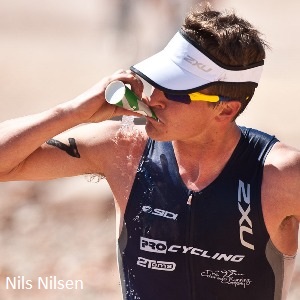
ST: In road triathlon, everyone talks about aerodynamics and rolling resistance as the keys to cycling speed. What is the equivalent in XTERRA? What makes the most difference?
Branden: There are a lot more variables to consider in XTERRA over a road tri, and that is what makes it so much more interesting and exciting. In XTERRA, the trails are different in each state and across the world. The setup you would ride in Colorado is vastly different from what you ride in Whistler, the Northeast, or Southeast. I will change tires for more or less tread depending on what is needed for faster speeds.
Also, your technical ability really influences the tires you should choose. I will adjust my tire pressure depending on the course… a one or two psi difference can make a big difference in the cornering ability, so it is critical to get that right.
If you are lucky enough to have a stable of bikes, you may choose to ride a hard tail or full suspension based on the course. At the XTERRA Southeast course and East Championships course in Richmond, full suspension is the way to go. In Beaver Creek for the Mountain Champs, or at the USA Champs in Ogden, there are 3500 feet of climbing and minimal descending, so a hardtail tends to do better. I will change suspension set up slightly with the courses – typically a small change to the compression damping and rebound – depending on the amount of cornering, and how bumpy the course is.
ST: What is your take on bike fit for mountain bikes? Is there such a thing as a mountain bike “triathlon” position?
Branden: In comparison to a road bike or tri bike fit where the position is fairly static, the fit position for a mountain bike is very dynamic. You are constantly shifting your weight around on the bike and need to be able to maneuver the bike up, over, down and around objects. The saddle is typically a slight bit lower than on the road so you can get behind it on the steep downhills. The handlebar set up is a bit more critical. If the bar is too high you won’t be able to keep the front wheel on the ground on steep climbs; if it’s too low and then it is hard to lift the front wheel up and over objects in your way. I don’t switch my handlebars out, but a narrower bar would be good in Alabama and Richmond with the tight corners and trees. But, for the longer descents in the mountains a wide bar is much more comfortable and stable. The big change I will make to the bars are my grips – the Ergon GS1 for courses with trees or the Ergon GS2 on the climbing courses so I have a second hand position with the bar ends.
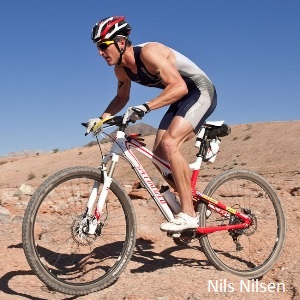
ST: Biggest athletic inspiration?
Branden: I draw inspiration from many people: Steve Prefontaine for his fighting attitude, and never being satisfied to just wait for the race to unfold. Ned Overend is an athletic wonder that can outride guys half his age and is one of the nicest professionals around. My parents are my biggest inspiration, they have always encouraged me to go out and be active and enjoy what I am doing. They taught me how hard work, dedication, and perseverance are what it takes to succeed.
ST: What are your three biggest pieces of advice for a beginning triathlete in terms of training?
Branden: I think consistency in training is the most important thing. By simply getting out and swimming, biking and running, you will see improvement. You don’t have to do anything special, just make the time to go do it. Once it is a routine to get out the door, then start incorporating the specific workouts.
Next, get a bike fit from a shop with trained fitters who have gone through a training course. A great fit goes a very long way and is worth the investment when done appropriately by a trained professional. Unfortunately there are people who buy a motion capture system and put you in a generic number range but don’t really look at what is going on (which can cause problems down the road).
Last, start a routine of doing the little things. Do core work or stretch while watching TV, hold proper posture. Do technique work for the swim, bike and run, it is overlooked, but an easy session each week focusing on technique will go a long way toward getting faster and more efficient and help reduce the chance of injury.
ST: What are your biggest pieces of advice for a beginning triathlete in terms of equipment?
Branden: Since the road side of things is covered very well by almost everyone else I will stick to the mountain side of triathlon equipment. First off, go tubeless on your mountain bike, that is the biggest thing you can do. Increased traction and fewer flats are the biggest benefits, and they outweigh any reason to not go tubeless. I use the Effetto Mariposa Caffelatex sealant; it the best stuff out there. You did a great review of all the sealants and I found this one to work the best since it fills the entire cavity of the tire. I came home from a ride and had 4 or 5 cuts on the sidewall that all sealed up while I was riding and I didn’t even know it till I was home.
In choosing a bike, go to demo days that are in the area when the brand truck rolls through town. Go to the local shops and see if they demo bikes so you can take them out on to dirt. You can’t get a good idea about how a mountain bike will feel if you don’t take it out on the dirt. Most shops that demo will apply some or all the demo fee toward the purchase of a bike if you buy it there. As for 26 or 29, hardtail or full suspension that comes down to the typical terrain you ride on and your preference. If you are new to mountain biking a full suspension bike will make you a better rider, similar to how aero carbon race wheels make you faster without you actually doing anything.
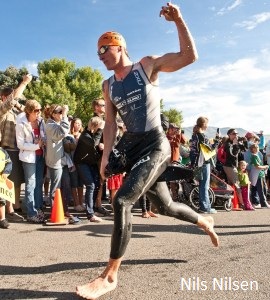
Take care of your equipment, there is a saying that a clean bike is a happy bike, and a happy bike is a fast bike. Find the best mechanic in town and trust them to do what needs to be done. A good shop will take the time to explain anything to you about what they are doing to the bike and why. The employees are not there to get rich; they are there because they love cycling and can provide very unique insight.
ST: People may not know, but you have worked part-time at a bike shop (Pro Cycling in Colorado Springs) for several years. Is it safe to assume you do all your own bike service? Do you get asked training questions by shop clients?
Branden: I do 90-95% of my own bike maintenance, but I will always have the real pro’s check over things leading into the big races to make sure everything is ready to go. It all comes with practice but it is great to know that there is not much I can’t do to fix the bike.
Clients often ask training, nutrition, and gear questions. I give them as much knowledge as I can. It always comes down to the individual though, what works for one person may not work for another.
ST: Has working in the bike shop influenced or affected your triathlon racing career?
Branden: Working at Pro Cycling definitely has influenced my tri career. Just by working there, I have a large knowledge base of products that I can talk to people about and apply it to both road and mountain biking. I connect face-to-face with people every day that may never know who Crowie, Stoltz, Wellington, or Dibens are… they just need to buy a bike, wheels, tools, or nutrition that any active person does. Working at the shop has helped me learn about new companies and products and many times get to try new products as well. It has helped me in directing my search for sponsors; when I contact a company for sponsorship I almost always have firsthand knowledge of their product already.
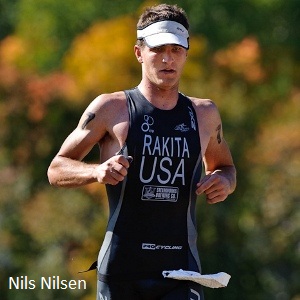
ST: How is sponsorship going for you?
Branden: As a US off road triathlete, it is a bit rough compared to the long distance road triathlon scene. That is where the majority of athletes race and is where the main focus is for triathlon related companies… I just need to convince more roadies that getting dirty is a lot more fun.
That being said I do work with some of the best companies in the market. I get to use what I have tested to be the best gear available, from my own experience in the shop and on the race course.
I have been with 2XU since 2007, they have the best and most comfortable clothing and it is top notch through the complete line of gear. I have been fortunate enough to work with SRM for the last couple years and there is no better power meter or customer service company out there. I have quite a few stories about how well they back their products and support their customers. My SRM’s are mounted to Rotor 3D+ cranks and Rotor Rings; a very powerful combination. I am working with First Endurance this year after buying their nutrition products for the past two years. I know other pro’s that are sponsored by other companies yet buy First Endurance products too, that says something about the quality of their product. I have worn Sidi’s for a number of years… they introduced the first off-road tri shoe, and have been a natural fit. Rudy Project supplies my helmets and sunglasses. If you get a chance to compare the optics from Rudy Project to other companies you would be blown away at the clarity. I work with Ergon for my bar grips and hydration packs. Effetto Mariposa, which produces Caffelatex sealant as well as the Guistaforza torque wrench, a must have when putting your bike together on the road. The Colorado Running Company is where I get all my shoes and have introduced me to some great products as well from 2Toms and their anti-chafe SportShield and BlisterShield which are killer for XTERRA. Finally I have been working with Paul Mitchell this year; they are a long-time XTERRA supporter and are behind the scenes at wide variety of athletic events. We all need a bit of help to look good! 🙂
ST: Where will we see Branden Rakita race for the remainder of 2012?
Branden: It has been an interesting year thus far and I’ve needed to make some adjustments. I was planning to race more on the road this year, but it hasn’t turned out that way. I will be doing the remainder of the XTERRA US Tour with the Mountain Champs in Beaver Creek on the 14th of July, head back to Tapalpa for XTERRA Mexico, the only net downhill XTERRA I am aware of, followed by XTERRA Canada over Labor Day weekend. I will use XTERRA Pueblo for a tune up for XTERRA USA Champs in Ogden and finish out the year at XTERRA Worlds in Maui. If the opportunity to go to Brazil for the XTERRA races down there popped up I would do everything I could to go… they are amazing races, and ones I highly recommend.
ST: Final thoughts?
Branden: Just to say to all the other racers out there – always make having fun be your first priority. Life and sport are much better when that is the goal. Keep things loose and always be willing to laugh at yourself.
You can follow Branden at his website:


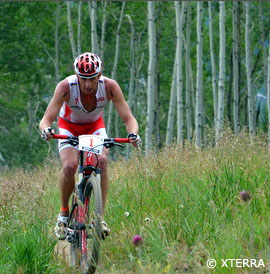
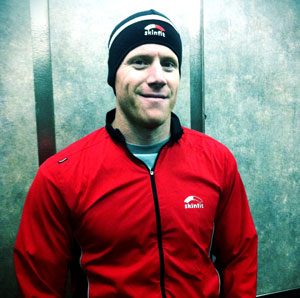
Start the discussion at slowtwitch.northend.network